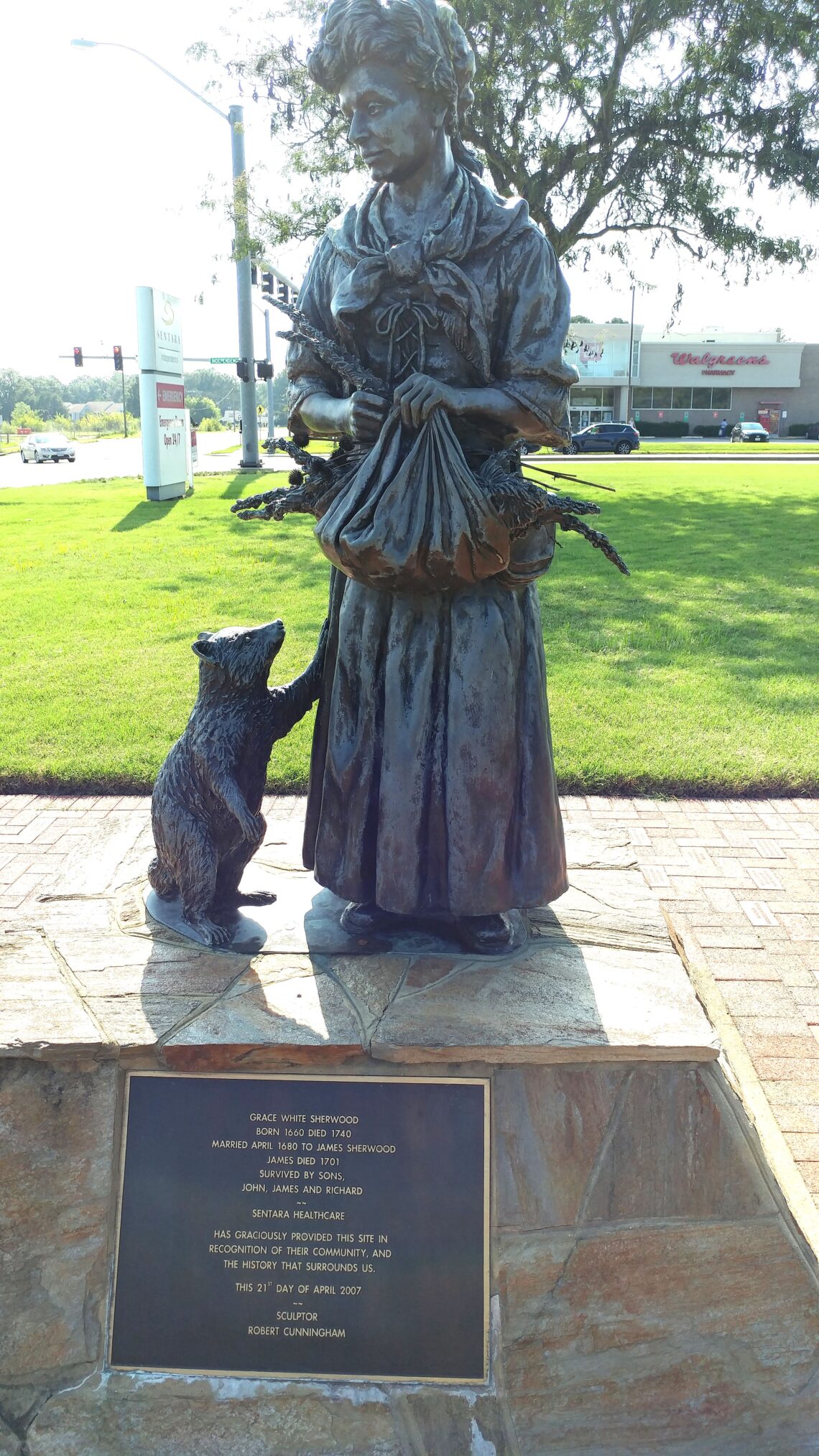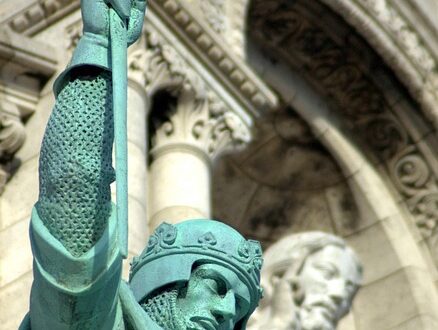Virginia Beach has a very colorful past and it is not surprising that the area is of special interest to history enthusiasts. In the 1700s, suffering and hardship were all too common, and in a quest to find explanation for different paranormal activities people delved beyond the realm of reality. However, as time passes paranoia became a weapon that turned suspicion into jail time, or worse, and many lives were ruined because of it. Although the most notorious witchcraft trials in America’s history took place in Salem between 1692 and 1693, legal proceedings for alleged “witches” lingered for an unexpectedly long period. The last recorded legal trial in the state of Virginia’s took place some years after the Salem frenzy. This remarkable court trial centered around one woman: Grace White Sherwood, who is often called the “Witch of Pungo” till today.
Grace Sherwood, the Litigious Witch was born around 1660, got married to a planter named James Sherwood and gave birth to three children. Later she lost her husband and instead of remarrying took over the farm without assistance. Grace was a strong independent woman, and according to legend she was also in the habit of wearing men’s clothes to work on the farm. Such oddness was uncommon at that time and as such she was an object of puzzled disapproval in some circles. It was a local scandal. Legend also has it that Grace was also a gifted healer and midwife”–two professions that ordinarily would have left a woman susceptible to charges of witchcraft by the more superstitious circle in the community. Grace kept to herself most times, and as a result she didn’t make friends easily. She was greatly interested in horticulture and brought in several exotic plants that were used extensively in her healing arts. While her farm was considered odd, it was something of a local apothecary, and it’s not uncommon for people to come from all over to get help with different ailments. This mysterious woman was becoming increasingly popular.
In 1697, she was accused by her neighbors of damaging crops, transforming herself into a cat, and causing the death of livestock.. The following year, she was accused of casting spell on a bull resulting in its death. The accusation didn’t hold water, as both parties involved dismissed the case. After each accusation, Sherwood sued for slander, but her lawsuits were futile. There were no plausible explanations for these ill-fated incidents, so Grace was blamed for everything that was abnormal. According to the local women, because Mrs. Sherwood was familiar with herbs, they concluded that must be a “witch.”
In 1706, a woman had some trouble with her pregnancy and she approached Grace for help. She got some herbs to help her with the pregnancy, but unfortunately the woman lost her baby. The woman blamed Grace for her baby’s death; she accused her of stealing the soul of the baby through witchcraft. This created the perfect tipping point for the public opinion to boil over against the reclusive and anomalous Mrs. Sherwood. Soon gossip started flying around. They decided then and there that she was a witch, and ought to be punished. Several people testified at her trial. She was charged and tried by ducking. Ducking involves being tied cross-bound and dropped into water. Her hand and legs were tied, bounded and a Bible tied around her neck. She was thrown into the Lynnhaven River. If the “pure” waters of the Lynnhaven received her and she go under, she would be vindicated, and though dead, she would be buried on consecrated land. If, however, she floated, she would be convicted of witchcraft and sentenced to life in prison. Because Grace was an excellent swimmer, she floated and was retrieved from the water and locked up. However, her survival posed a particular dilemma. The law stipulated that witches should be burned and according to the ducking trial she was a witch. But then to burn women was a thing unknown in Virginia.” She was jailed for about 7 years and finally freed in 1714 after the furor of witch prosecution died down in the American colonies. Although her property had been confiscated by the Commonwealth, after her release she sued the Commonwealth and won back her property in court. In a bid to retaliate, the colonial government made her pay back-taxes on the land for the years she was in jail. She paid and returned to her farm.
She had a fruitful life as a healer, midwife, and friend to all children and animals. She died age 80 at the autumn of 1740. Some 300 years after the incident. Timothy M. Kaine, the governor of the Commonwealth of Virginia pardoned her. In fact, Grace Sherwood is known today as the only deceased person in Virginia to be exonerated. Additionally, in 2007 a stature of Grace Sherwood was unveiled on the lawn at Bayside Hospital just about a short distance from old second Princess Anne Courthouse of 1706, the court where she was tried. Sherwood’s story is about diversity and tolerance. It is a story about the perils of ignorance, and the dark power of fear. Sherwood has become a local legend in Virginia Beach, where she is popularly referred to as the “Witch of Pungo”.





